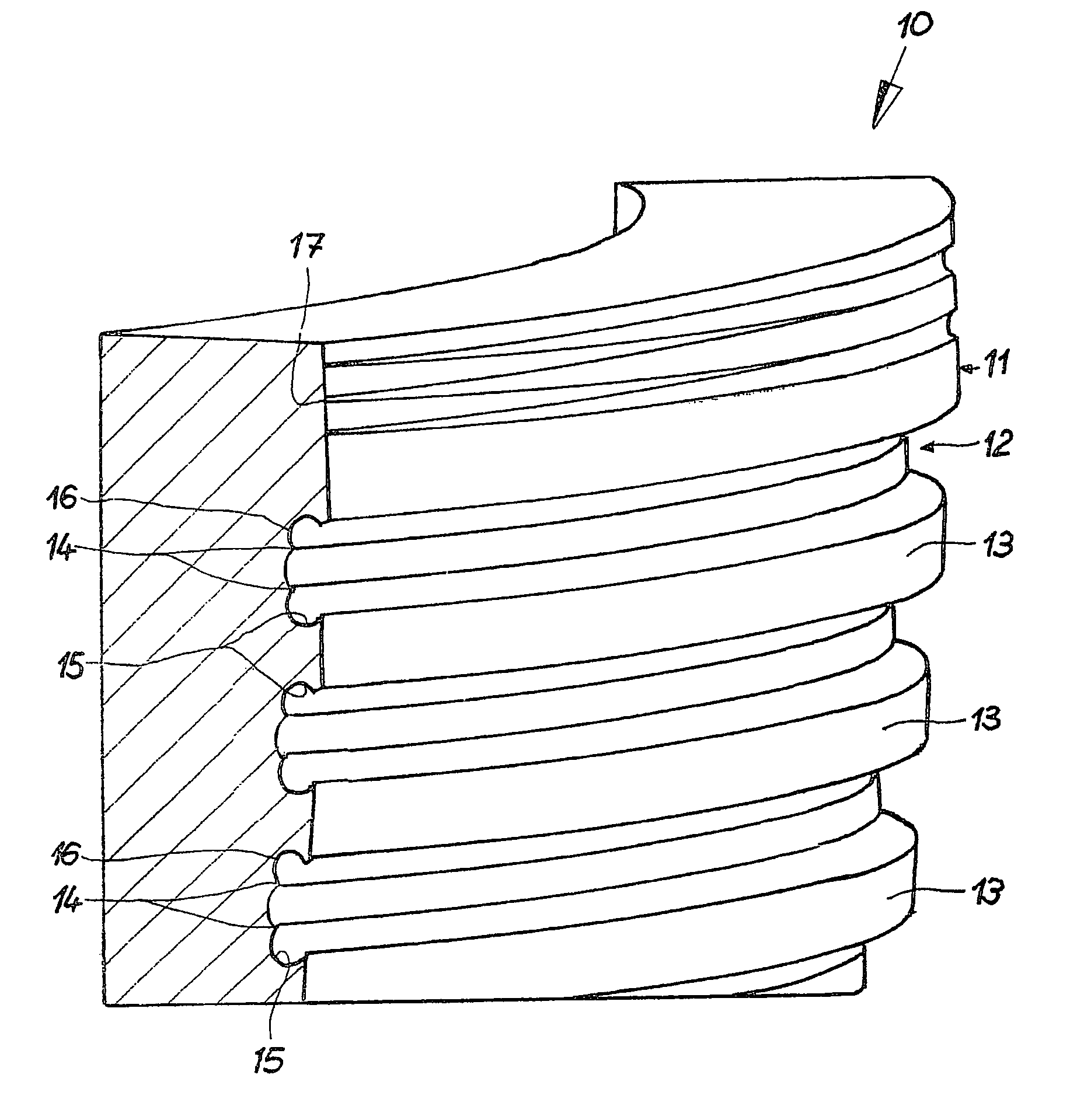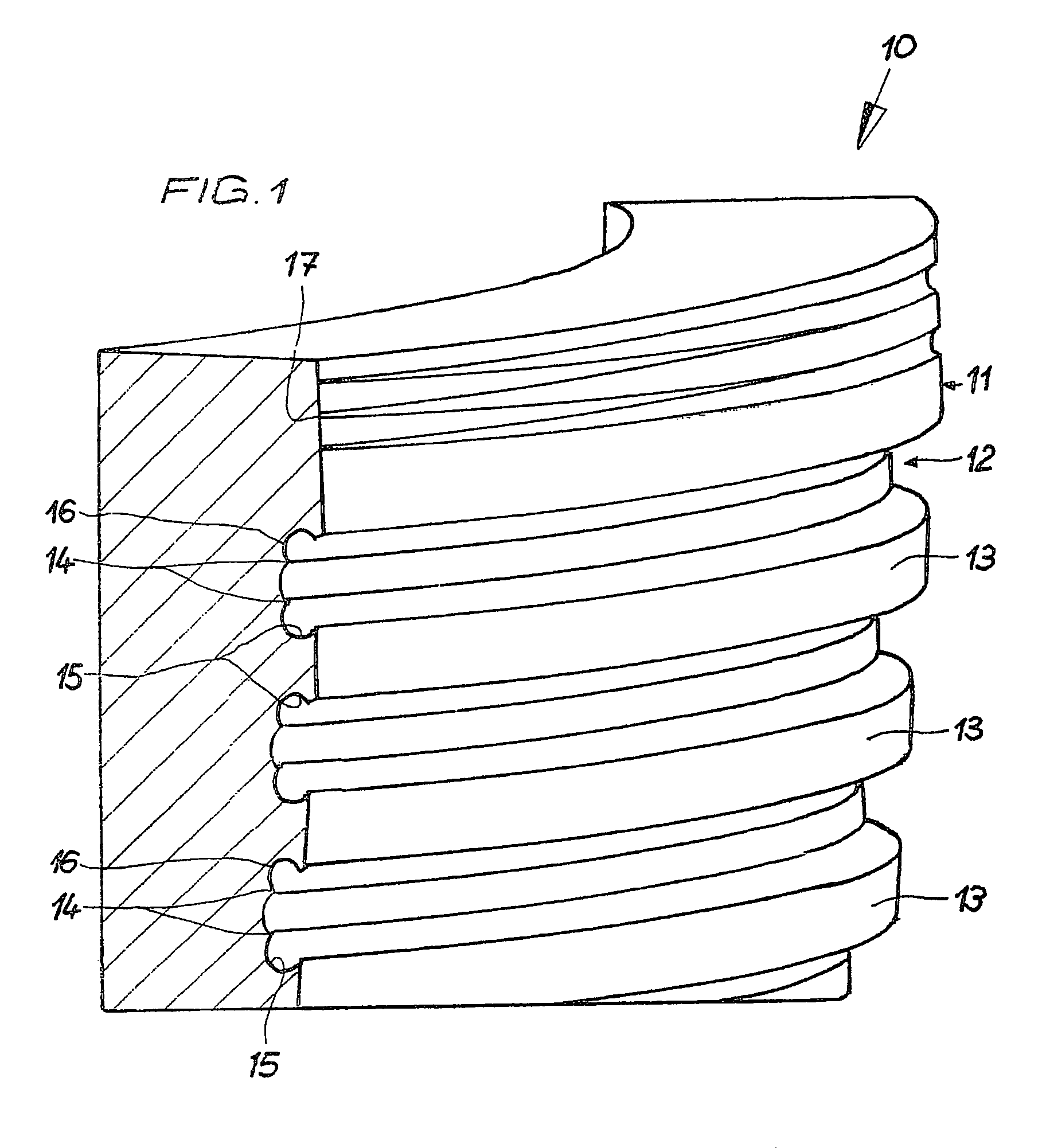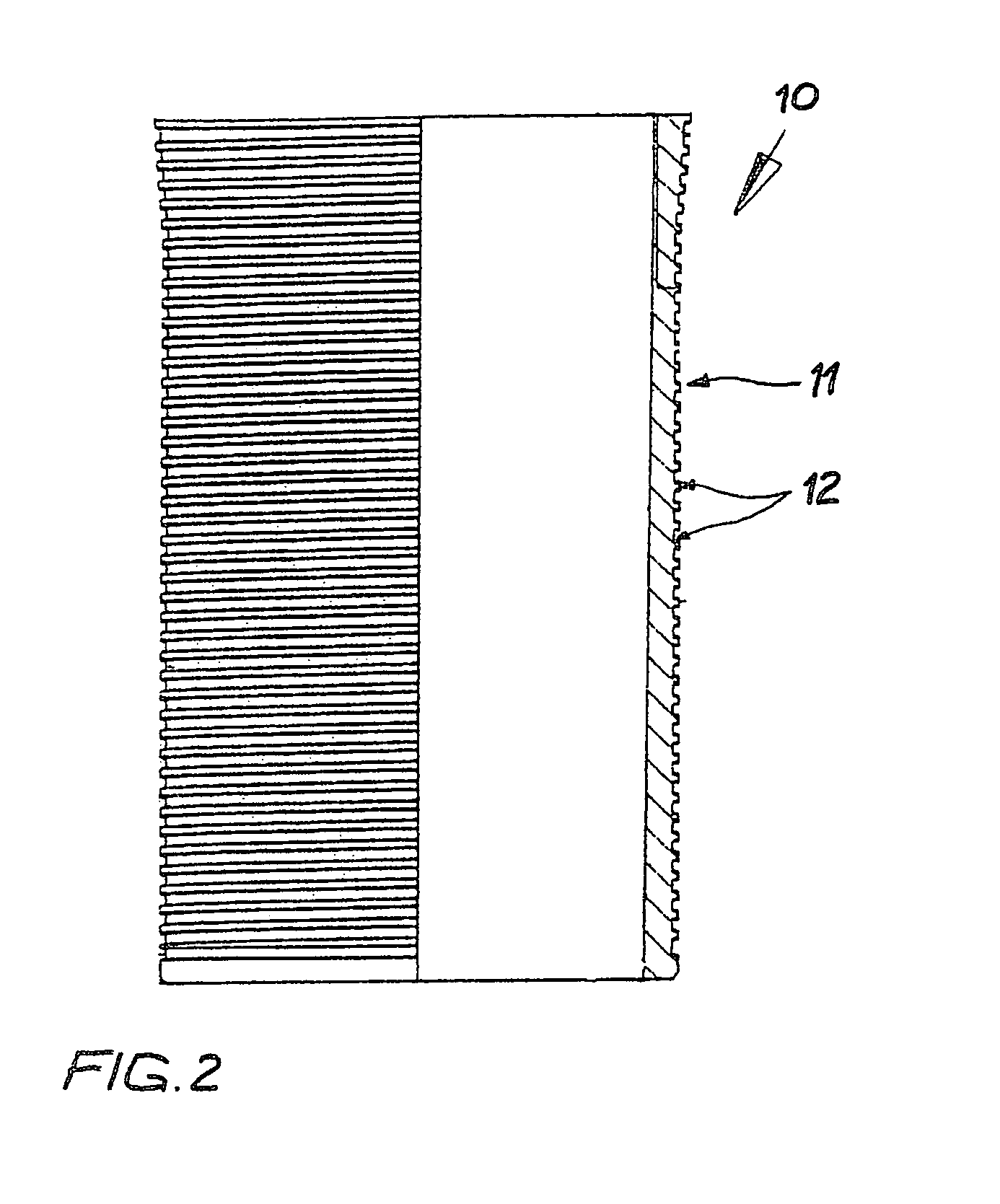Cylinder sleeve
a technology of cylinder sleeves and sleeve covers, which is applied in the direction of reciprocating piston engines, positive displacement engines, cylinders, etc., can solve the problems of local disruption of heat transfer between the cylinder sleeves and the crankcase, non-uniform inability to produce with as little effort, etc., to achieve uniform temperature distribution in the cylinder, reliable shape fitting, and the effect of producing with as little effor
- Summary
- Abstract
- Description
- Claims
- Application Information
AI Technical Summary
Benefits of technology
Problems solved by technology
Method used
Image
Examples
Embodiment Construction
[0026]FIGS. 1 to 3 show a first exemplary embodiment of a cylinder sleeve 10 according to the invention, having a surface structure 12 according to the invention. The cylinder sleeve 10 is produced from cast iron, for example, or from a wear-resistant aluminum alloy. The outer mantle surface 11 of the cylinder sleeve 10 can be configured to be partly narrowed and / or partly widened and / or oval in cross-section. In the exemplary embodiment, the outer mantle surface 11 is provided with a surface structure 12 that runs in spiral shape, at a uniform incline. FIG. 2 shows the cylinder sleeve in an overall view, whereby the left half shows a front view and the right half shows a sectional representation. In the exemplary embodiment, the entire mantle surface 11 of the cylinder sleeve 10 is provided with a surface structure 12. Of course, the surface structure 1 can also be configured only in the axial direction, over a partial region of the outer mantle surface 11, for example in the cente...
PUM
 Login to View More
Login to View More Abstract
Description
Claims
Application Information
 Login to View More
Login to View More - R&D
- Intellectual Property
- Life Sciences
- Materials
- Tech Scout
- Unparalleled Data Quality
- Higher Quality Content
- 60% Fewer Hallucinations
Browse by: Latest US Patents, China's latest patents, Technical Efficacy Thesaurus, Application Domain, Technology Topic, Popular Technical Reports.
© 2025 PatSnap. All rights reserved.Legal|Privacy policy|Modern Slavery Act Transparency Statement|Sitemap|About US| Contact US: help@patsnap.com



